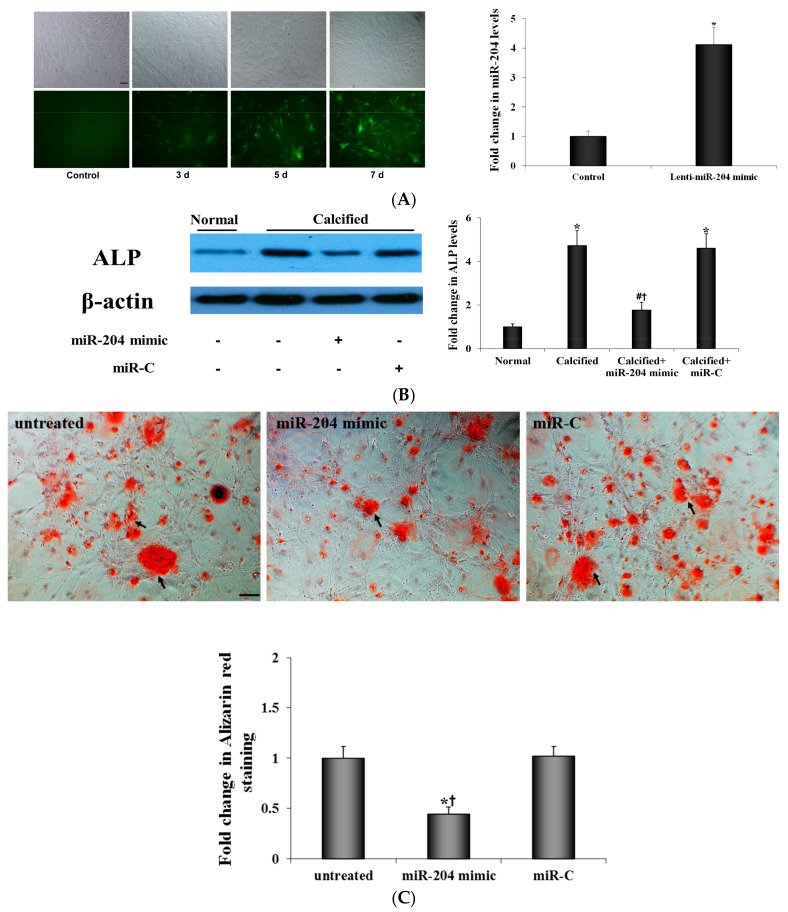Figure 2.
MiR-204 mimic suppresses the osteogenic activity in AVICs from diseased valves. (A) Human AVICs were infected with lentivirus expressing miR-204 mimic. Representative images show lentiviral infection efficiency (GFP expression) over time in human AVICs. Data of real-time qRT-PCR analysis show markedly elevated miR-204 levels in cultures treated with lentiviral miR-204. Scale bar = 200 μm. Mean ± SE; n = 6 distinct cell isolates; * p < 0.05 vs. Control (culture infected by lentiviral miR-C). (B) AVICs from diseased human aortic valves were treated with miR-204 mimic (5 nM) or irrelevant oligonucleotide (miR-C, 5 nM) for 72 h. Representative immunoblots of 6 separated experiments using distinct cell isolates and densitometric data show that miR-204 mimic suppressed the expression of ALP in AVICs of diseased valves. Mean ± SE; * p < 0.05 vs. normal AVICs; # p < 0.05 vs. untreated calcified valve AVICs; † p < 0.05 vs. calcified valve AVICs+miR-C. (C) AVICs from diseased human aortic valves were untreated or infected with lentivirus that expresses miR-204 mimic or miR-C for seven days, and then cells are incubated in a conditioning medium (growth medium supplemented with 10 mmol/L β-glycerophosphate, 10 nmol/L vitamin D3, 10 nmol/L dexamethasone and 8 mmol/L CaCl2) for 14 days. Expression of miR-204 mimic suppressed calcium deposit formation. Scale bar = 200 μm. Mean ± SE; n = 6 distinct cell isolates; * p < 0.05 vs. untreated AVICs; † p < 0.05 vs. AVICs treated with miR-C.

